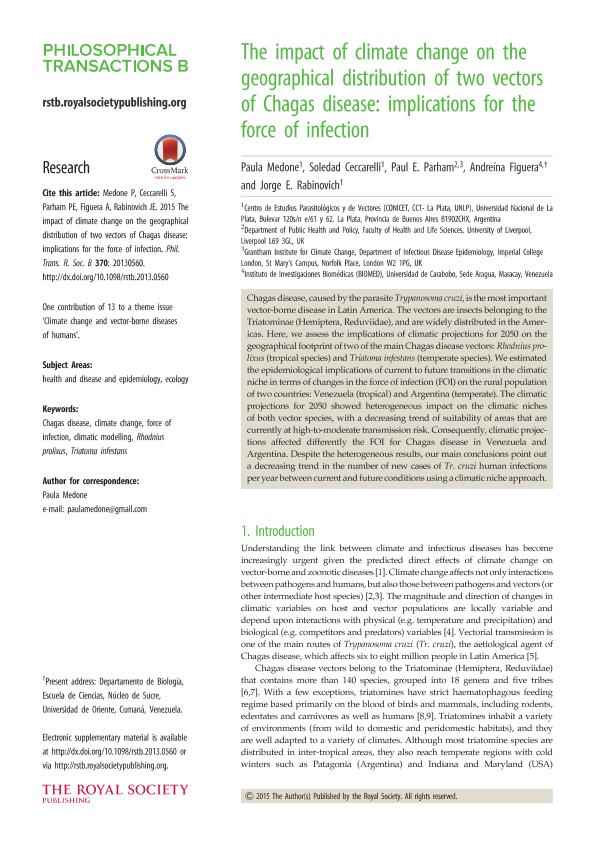Artículo
The impact of climate change on the geographical distribution of two vectors of Chagas disease: implications for the force of infection
Fecha de publicación:
05/04/2015
Editorial:
The Royal Society
Revista:
Philosophical Transactions Of The Royal Society B: Biological Sciences
ISSN:
0962-8436
Idioma:
Inglés
Tipo de recurso:
Artículo publicado
Clasificación temática:
Resumen
Chagas disease, caused by the parasite Trypanosoma cruzi, is the most important vector-borne disease in Latin America. The vectors are insects belonging to the Triatominae (Hemiptera, Reduviidae), and are widely distributed in the Americas. Here, we assess the implications of climatic projections for 2050 on the geographical footprint of two of the main Chagas disease vectors: Rhodnius prolixus (tropical species) and Triatoma infestans (temperate species). We estimated the epidemiological implications of current to future transitions in the climatic niche in terms of changes in the force of infection (FOI) on the rural population of two countries: Venezuela (tropical) and Argentina (temperate). The climatic projections for 2050 showed heterogeneous impact on the climatic niches of both vector species, with a decreasing trend of suitability of areas that are currently at high-to-moderate transmission risk. Consequently, climatic projections affected differently the FOI for Chagas disease in Venezuela and Argentina. Despite the heterogeneous results, our main conclusions point out a decreasing trend in the number of new cases of Tr. cruzi human infections per year between current and future conditions using a climatic niche approach.
Archivos asociados
Licencia
Identificadores
Colecciones
Articulos(CEPAVE)
Articulos de CENTRO DE EST.PARASITOL.Y DE VECTORES (I)
Articulos de CENTRO DE EST.PARASITOL.Y DE VECTORES (I)
Citación
Medone, Paula; Ceccarelli, Soledad; Parham, Paul E.; Figuera, Andreína; Rabinovich, Jorge Eduardo; The impact of climate change on the geographical distribution of two vectors of Chagas disease: implications for the force of infection; The Royal Society; Philosophical Transactions Of The Royal Society B: Biological Sciences; 370; 1665; 5-4-2015; 1-12
Compartir
Altmétricas




